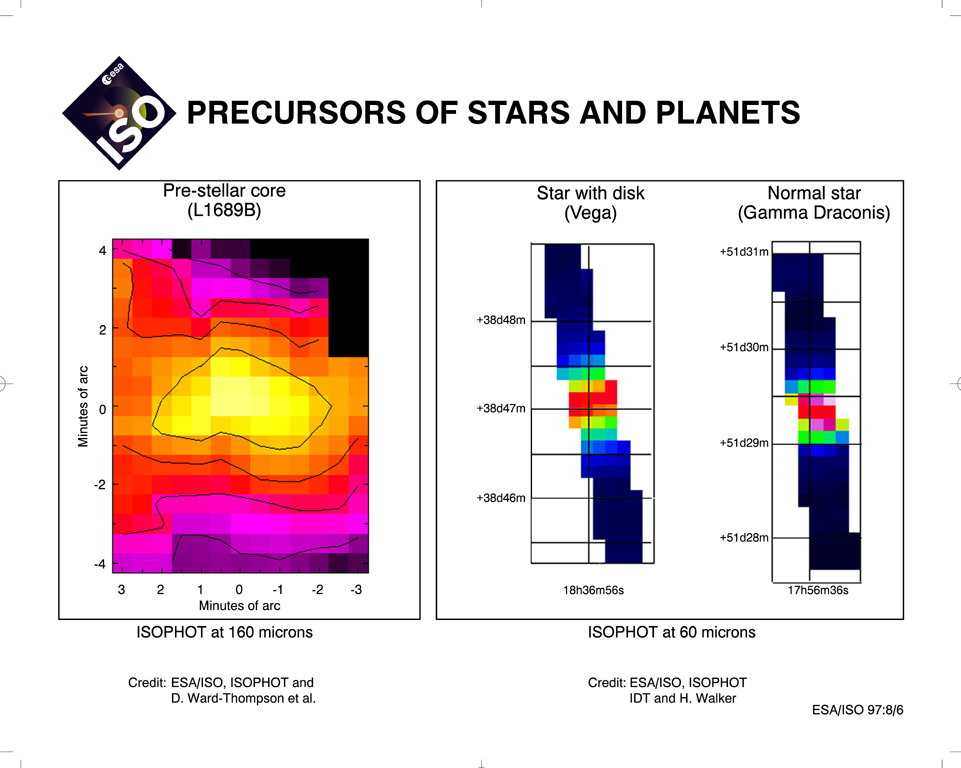
The Following text was taken from the ESA/ISO Info Note 24.97:
The first infrared image ever obtained of a pre-stellar core shows the egg-like object from which a new star will form. It illustrates ISO's role in tracing the earliest stages of star formation. Pre-stellar cores are very cold and hidden by dust from all telescopes except those working with very short radio waves and long infrared waves. Within a core, gravity squeezes gas and dust towards the centre to make an embryonic star, but by the time other instruments can see anything, the star-making processes are far advanced. The object L1689B is judged to be on the very brink of collapsing under gravity, to begin to form a star.
Derek Ward-Thompson of the Royal Observatory Edinburgh (UK) with British and French colleagues detected L1689B and other objects by sub-millimetre radio observations, as small, dense features within a much larger cloud of gas and dust located in the constellation Ophiuchus. Scans by ISO's photometer ISOPHOT, at various wavelengths up to its limit of 200 microns, now give different impressions of L1689B and enable the astronomers to measure the temperature of the pre-stellar core at about minus 260 degrees C (13 K). The image is colour-coded for intensity, with the bright core in yellow-white.
INFRARED PROCESSING AND ANALYSIS CENTER